Chapter 01: Cellular Biology
Huether: Understanding Pathophysiology, 7th Edition
MULTIPLE CHOICE
1. A student is observing a cell under the microscope. It is observed to have supercoiled DNA with histones. Which of the following would also be observed by the student?
A single circular chromosome
b. A nucleus
c. Free-floating nuclear material
d. No organelles
ANS: B
The cell described is a eukaryotic cell, so it has histones and a supercoiled DNA within its nucleus; thus, the nucleus should be observed. A single circular chromosome called a prokaryote contains free-floating nuclear material but has no organelles.
2. A nurse is instructing the staff about cellular functions. Which cellular function is the nurse describing when an isolated cell absorbs oxygen and uses it to transform nutrients to energy?
Metabolic absorption
b. Communication
c. Secretion
d. Breathing
ANS: D
The cell’s ability to absorb oxygen is referred to as respiration while its communication ability involves maintenance of a steady dynamic state, metabolic absorption provides sutrition, and secretion allows for the synthesizing of new substances.
3. A eukaryotic cell is undergoing DNA replication. In which region of the cell would most of the genetic information be contained?
a. Mitochondria
b. Ribosome
c. Nucleolus
4. Nucleus cytoplasm
ANS: C
The region of the cell that contains genetic material, including a large amount of ribonucleic acid, most of the DNA, and DNA-binding proteins, is the nucleolus, which is located within the cell’s nucleus. Mitochondria is associated with cellular respiration while ribosomes are involved with protein manufacturing. Cytoplasm is a fluid filling that is a component of the cell
4. Which of the following can remove proteins attached to the cell’s bilayer by dissolving the
layer itself? a. Peripheral membrane proteins
b. Integral membrane proteins
c. Glycoproteins
d. Cell adhesion molecules
ANS: B
Proteins directly attached to the membrane bilayer can be removed by the action of integral membrane proteins that dissolve the bilayer. Peripheral membrane proteins reside at the surface while cell adhesion molecules are on the outside of the membrane. Glycoprotein marks cells and does not float.
5. Which of the following can bind to plasma membrane receptors?
a Oxygen
b. Ribosomes
c. Amphipathic lipids
4. Ligands
ANS: D
Ligands are the only specific molecules that can bind with receptors on the cell membrane.
6. A nurse is reviewing a report from a patient with metastatic cancer. What alternation in the extracellular matrix would support the diagnosis of metastatic cancer?
Decreased fibronectin
b. Increased collagen
c. Decreased elastin
d. Increased glycoproteins
ANS: A
Only a reduced amount of fibronectin is found in some types of cancerous cells, allowing them to travel or metastasize.
7. Which form of cell communication is used to relate to other cells in direct physical contact?
a. Cell junction
b. Gap junction
c. Desmosome
4. Tight junction
ANS: A
Cell junctions hold cells together and permit molecules to pass from cell to cell. Gap junctions allow for cellular communication between cells. Neither desmosomes nor tight junctions are associated with cellular communication
8. Pancreatic beta cells secrete insulin, which inhibits secretion of glucagon from neighboring alpha cells. This action is an example of which of the following signaling types?
Paracrine
b. Autocrine
e. Neurohormonal
4. Hormonal
ANS: A
Paracrine signaling involves the selease of local chemical mediators that are quickly taken up, destroyed, or immobilized, as in the case of insulin and the inhibition of the secretion of glucagon. None of the other options involve signaling that is associated with a local chemical mediator like insulin.
9. In cellular metabolism, each enzyme has a high affinity for a
a solute
substrate.
e. receptor.
4. nibosome.
ANS: B
Each enzyme has a high affinity for a substrate, a specific substance converted to a product of the reaction. Cellular metabolism is not dependent on an attraction between an enzyme and any of the remaining options.
10. An athlete runs a marathon, after which his muscles feel fatigued and unable to contract. The athlete asks the nurse why this happened. The nurse’s response is based on the knowledge that the problem is result of a deficiency of
GTP.
AMP
ATP.
4 GMP.
ANS: C
When ATP is deficient, impaired muscle contraction results. None of the other options are involved in muscle contraction
11. Which phase of catabolism produces the most ATP?
a. Digestion
b. Glycolysis
c. Oxidation
4. Citric acid cycle
ANS: D
While some ATP is produced during the oxidation and glycolysis phases, most of the ATP is generated during the citric acid cycle. Digestion does not produce any ATP.
12. A nurse is teaching the staff about the phases of cellular catabolism. Which phases should the nurse include?
a. Digestion, glycolysis, oxidation, and the citric acid cycle
b. Diffusion, osmosis, and mediated transport
S phase, G phase, and M phase
4. Metabolic absorption, respiration, and excretion
ANS: A
Only digestion, glycolysis, oxidation, and the citric acid cycle are the phases of cellular catabolism.
13. A runner has depleted all the oxygen available for muscle energy. Which of the following will facilitate his continued muscle performance?
a. Electron-transport chain
b. Aerobic glycolysis
c. Anaerobic glycolysis
4. Oxidative phosphorylation
ANS: C
When no oxygen is available, anaerobic glycolysis occurs. The electron-transport chain is part of the citric acid cycle. Aerobic glycolysis involves the presence of oxygen. Oxidative phosphorylation is the mechanism by which the energy produced from carbohydrates, fats, and proteins is transferred to ATP. It is not part of muscle performance.
14. A faculty member asks a student to identify the appropriate term for the movement of a solute from an area of greater to lesser concentration. Which answer indicates the nursing student understood the teaching?
a. Osmosis
b. Diffusion
c. Hydrostatic pressure
d. Active transport
ANS: B
Diffusion is the movement of a solute molecule from an area of greater solute concentration to an area of lesser solute concentration through a permeable membrane. Osmosis is the movement of water across a semipermeable membrane from a region of higher water concentration to one of lower concentration. Hydrostatic pressure is the force of fluid against a cell membrane. In active transport, molecules move up a concentration gradient.
15. Which description accurately describes electrolytes?
Small lipid-soluble molecules
b. Large protein molecules
c. Micronutrients used to produce ATP
4. Electrically charged molecules
ANS: D
Electrolytes are electrically charged molecules. They are not lipid soluble, they are not made up of protein, and they do not play a role in ATP production.
16. A nurse is reading a chart and sees the term oncotic pressure. The nurse recalls that oncotic pressure (colloid osmotic pressure) is determined by:
a the concentration of sodium
b. plasma proteins.
hydrostatic pressure.
d. the availability of membrane transporter proteins.
ANS: B
Oncotic pressure is determined by the effect of colloids or plasma proteins. The concentration of sodium plays a role in tonicity. Hydrostatic pressure is the force within a vessel. Membrane transporter proteins are involved in active transport within a concentration gradient.
17. A patient has a body fluid of 300 mOsm/kg. This lab result is measuring
a osmolality.
b. osmolarity.
cosmotic pressure.
d. oncotic pressure
ANS: A
Osmolality measures the number of milliosmoles per kilogram of water, or the concentration of molecules per weight of water, while osmolarity measures the number of milliosmoles per liter of solution, or the concentration of molecules per volume of solution. Osmotic pressure is the amount of hydrostatic pressure required to oppose the osmotic movement of water. Oncotic pressure is from plasma proteins, not body fluids.
18. A nurse is discussing the movement of fluid across the arterial end of capillary membranes into the interstitial fhid surrounding the capillary. Which process of fluid movement is the nurse describing?
a. Hydrostatic pressure
b. Osmosis
c. Broadcast
d. Active transport
ANS: A
Blood reaching the capillary bed has a hydrostatic pressure of 25-30 mm Hg. which is sufficient force to push water across the thin capillary membranes into the interstitial space. Osmosis involves the movement of fluid from an area of higher concentration to an area of lower concentration. It does not involve pressure or force. Diffusion is the passive movement of a solute from an area of higher solute concentration to an area of lower solute concentration. Active transport involves movement up a concentration gradient.
19. How are potassium and sodium transported across plasma membranes?
a. By passive electrolyte channels
b. By coupled channels
c. By adenosine triphosphate enzyme (ATPase)
d. By diffusion
ANS: C
The transporter protein ATPase is directly related to sodium and potassium transport via active transport. Electrolyte movements require energy and do not move passively, nor are they transported by diffusion. Enzymes, not electrolytes, are passed via coupled channels.
20. The ion transporter that moves Na” and Ca” simultaneously in the same direction is an example of which of the following types of transport?
biport
b. Uniport
And. Antiport
4. Symport
ANS: D


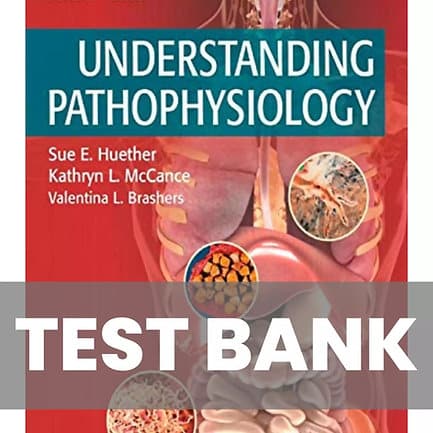


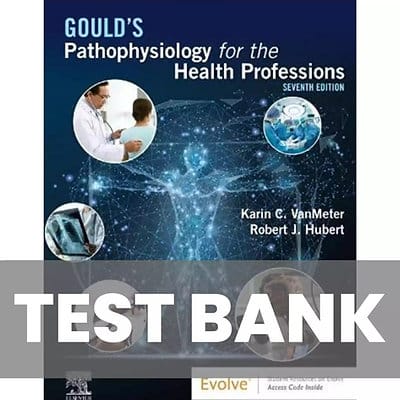


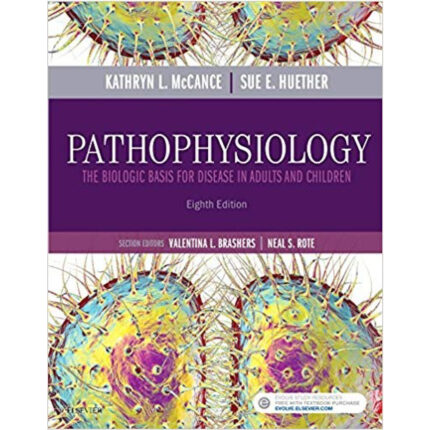
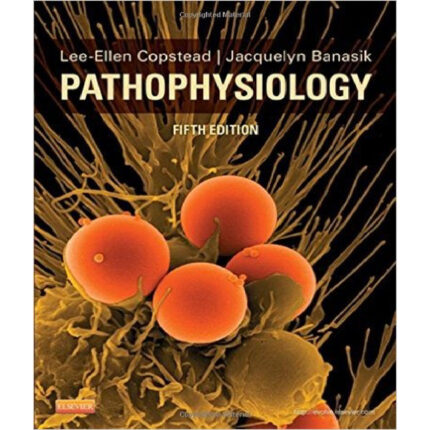

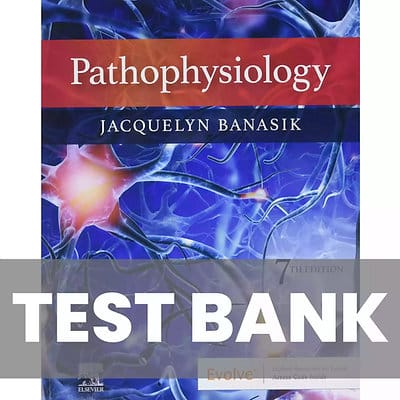

Reviews
There are no reviews yet.